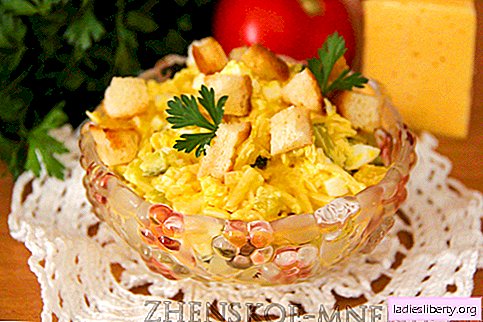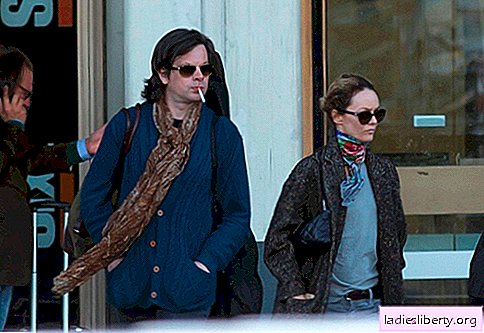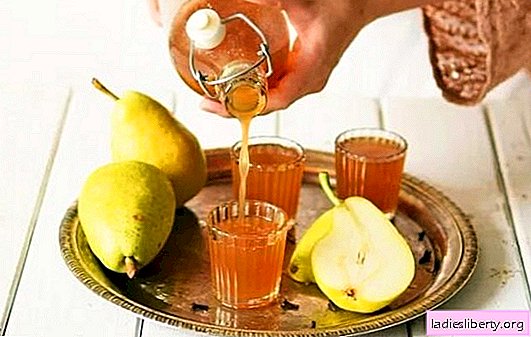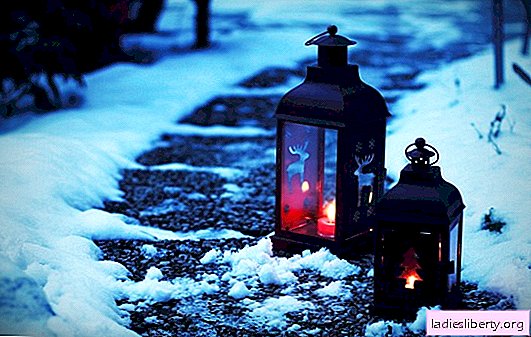
Pancreatitis is a disease in which a strong inflammatory process develops in the pancreas of a person, due to which the organ partially loses its function in the normal production of pancreatic juice. Consider in more detail the symptoms of pancreatitis in men and methods of treating this ailment.
Pancreatitis in men: causes
The following factors can contribute to the appearance of pancreatitis in men:
1. Frequent intake of alcohol-containing drinks is one of the most common causes of pancreatitis. This is justified by the fact that after alcohol enters the stomach, it increases the concentration of enzymes in the pancreatic juice produced.
Moreover, alcohol can cause a spasm of the sphincter, which is located under the pancreas, and with alcohol abuse it may not open at all, while blocking the flow of pancreatic juice.
2. Poorly balanced diet. This includes the regular use of harmful food (fatty, spicy, smoked, fried, etc.), overeating, dry food, etc. It is also characteristic that pancreatitis usually worsens after the holidays, when a person allows himself to eat various fatty foods in large quantities, thereby exerting an incredible burden on the entire digestive system.
3. Kidney stones cause pancreatitis in almost 20% of all cases.
4. Earlier abdominal injuries. This also includes a blunt stab in the stomach, a fall or an injury resulting from an accident.
5. Chronic diseases of the abdominal organs can cause malfunctions of the pancreas, which, when neglected, can develop into pancreatitis.
6. The development of pancreatitis as a complication of a severe form of influenza occurs in people with weakened immune systems.
7. Severe infectious lesions (viral hepatitis, etc.).
In addition, additional factors that increase the risk of pancreatitis in men are:
1. Smoking.
2. Individual genetic predisposition of a person to this disease.
3. Long-term treatment with certain groups of drugs (analgesics, antispasmodics, etc.). Moreover, the situation is even more complicated if a person arbitrarily prescribes drugs and the dosage of their intake.
4. Recently transferred surgical interventions on the pancreas or abdominal organs.
5. A parasitic lesion that can cause clogging of the pancreatic ducts.
6. Related chronic gastrointestinal diseases (gastric ulcer, colitis, enterocolitis, etc.).
Pancreatitis in men: symptoms and signs
Pancreatitis has two forms of course: acute and chronic. Each of them is accompanied by its own symptoms.
Acute pancreatitis has the following manifestations:
1. The pain. This is the most common sign of pancreatic inflammation. The nature of the pain is sharp, pulling, squeezing. Its localization can be different: in the hypochondrium, to the right or left of the stomach (depending on the exact location of the inflammation of the gland).
The pain can aggravate with overeating or prolonged starvation.
It is also important to note that sometimes the pain can be so pronounced that in the absence of timely medical care, a person may experience pain shock.
2. An increase in body temperature happens as a reaction of the body to the inflammatory process.
3. Sudden changes in blood pressure.
4. General deterioration of the patient’s state of health. Moreover, a person can be weak, exhausted. Also, his appetite may decrease.
5. A characteristic feature of acute pancreatitis is the pallor of the patient’s face skin, which over time becomes more gray.
6. Frequent nausea and vomiting, after which the patient does not feel relief.
7. Hiccups.
8. Belching.
9. Dry mouth.
10. Disturbance of digestion. In this case, severe diarrhea prevails. The chair has an unpleasant odor. Particles of undigested food are observed in it.
11. The appearance in the patient's tongue of yellow plaque, indicating a severe disruption of the pancreas.
12. Due to clogging of the bile ducts, the patient may develop jaundice. In this condition, the patient urgently needs to be hospitalized.
13. Strong abdominal distention. At the same time, during palpation, the doctor will not determine the tension of the abdominal muscles.
The chronic form of pancreatitis is accompanied by less pronounced symptoms, but it is not considered less dangerous. In this condition, a person will observe the following symptoms:
1. Aching pain that occurs after a violation of diet or eating junk food. The intensity of the pain is not very pronounced.
2. Nausea develops after eating fatty or alcoholic beverages. Vomiting is rare.
3. The deterioration of digestion of food.
4. Weight loss is associated with malabsorption of beneficial substances and frequent diarrhea. In this state, the body undergoes severe depletion.
5. Increased salivation.
6. Frequent rumbling of the abdomen.
7. Deterioration of appetite, which is associated with the expectation of another nausea after eating.
8. A light chair.
Also, in chronic pancreatitis, a man may suffer from poor sleep, irritability and diabetes mellitus, which will occur against the background of pancreatic inflammation.
Pancreatitis in men: treatment features
The treatment of pancreatitis largely depends on the form and neglect of the disease. Traditional therapy involves the following:
1. In the first two days after an attack of pancreatitis, the patient is shown therapeutic fasting. In this case, you can drink only water and green tea. With severe pain, the patient needs to lie on his side and take the position of the embryo. You can also apply heating pads with cool water (no longer than 5 minutes).
2. For spasms, antispasmodics (No-shpa) are prescribed.
3. In chronic pancreatitis, enzyme preparations (Mezim, Pancreatin, Creon) are necessarily used.
4. If the infection caused pancreatitis, then the patient is prescribed potent antibiotics to stop its activity.
5. To reduce acidity in tissues, antacids and antioxidants are used.
6. Atropine or Platifillinum can be applied to decrease pancreatic secretion.
7. Sometimes abdominal lavage is used.
8. If pancreatitis was caused by clogging of the ducts with a gallstone, then an operation called cholecystectomy is performed.
In addition, a prerequisite in the treatment of pancreatitis is the observance of therapeutic nutrition. The diet provides the following:
1. Refusal of salt, fatty, fried and sour.
2. The ban on alcohol.
3. Exclusion from the diet of products that stimulate the production of pancreatic juice (canned food, sausages, seasonings, fruit juices, broths).
4. Limit the use of coarse fiber (cabbage, legumes).
5. The patient is shown daily use of vegetable purees, casseroles and boiled poultry. You can also eat cereals in the water.
6. All dishes should be lean and grated.
7. You can eat often, but in small portions.
8. Coffee, pastries, sugary drinks and convenience foods are strictly prohibited.
Pancreatitis in men: treatment, complications, prevention
In the absence of timely treatment, pancreatitis can cause such complications in the patient's condition:
1. The transition of the disease into a chronic form.
2. The development of inflammation of the abdominal cavity.
3. The formation of abscesses on the organs of the abdominal cavity.
4. Violation of the work of internal organs is due to severe intoxication of the body.
5. Internal bleeding.
6. The formation of jaundice.
7. High risk of developing diabetes.
8. Strong exhaustion of the body.
To reduce the risk of developing pancreatitis, men should adhere to such recommendations of a gastroenterologist:
1. To give up smoking and drinking alcohol.
2. Timely treat any gastrointestinal diseases.
3. When the first signs of pancreatitis appear, you should immediately consult a doctor.
4. Follow the principles of proper nutrition (do not overeat, eat only wholesome food, do not eat fatty foods, etc.).
5. Timely treat urolithiasis and viral diseases.
6. Strengthen immunity (take vitamins, have a good rest, play sports).











